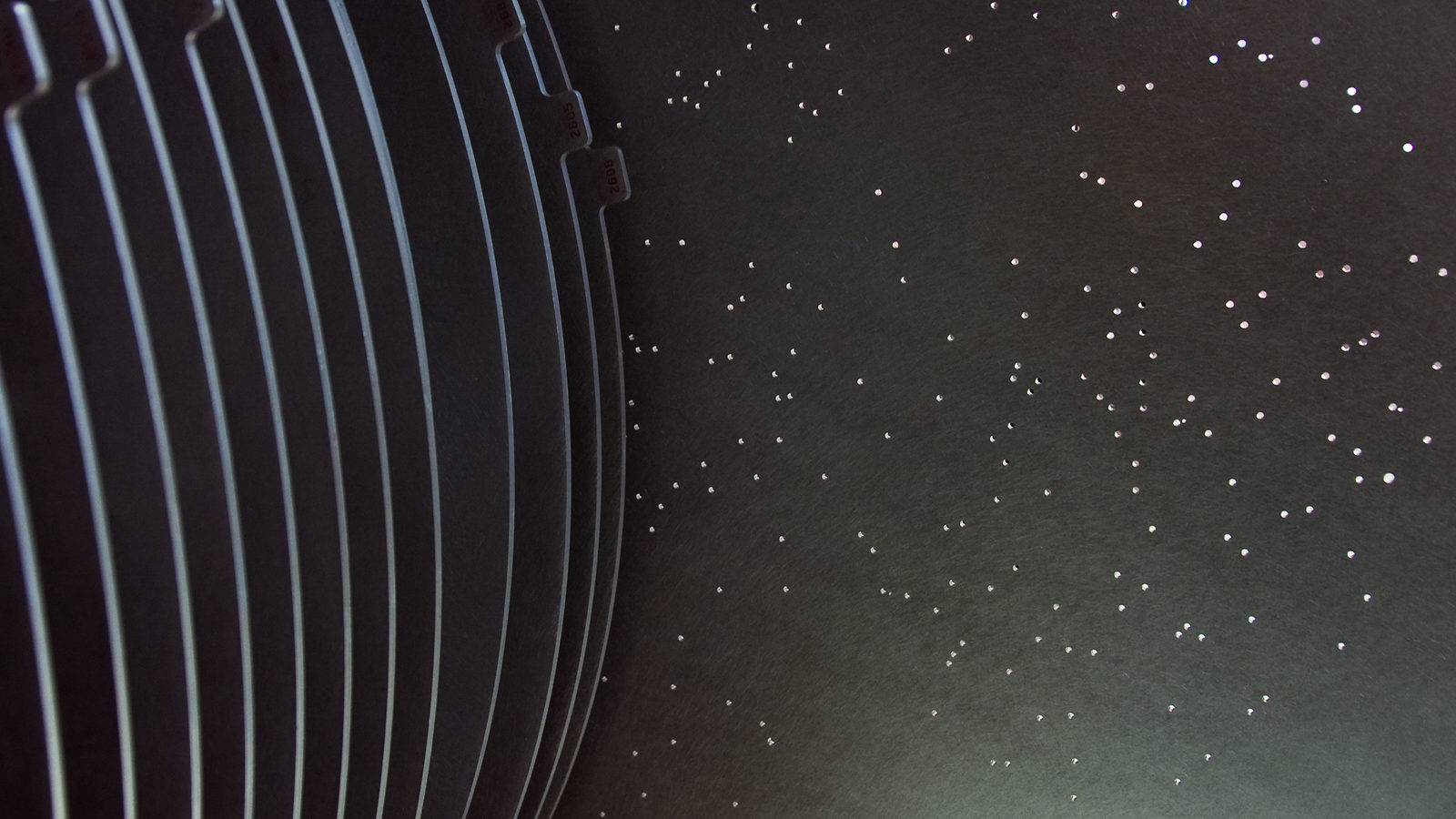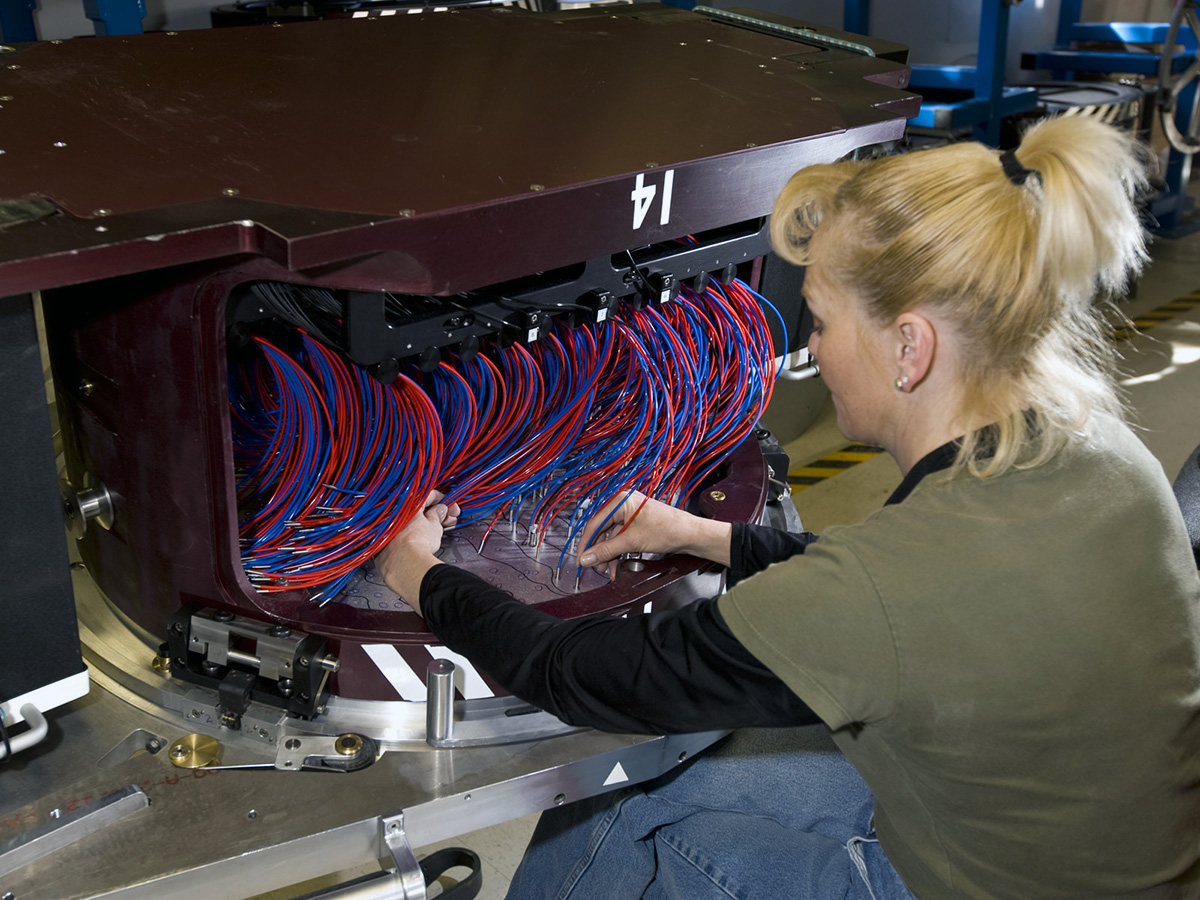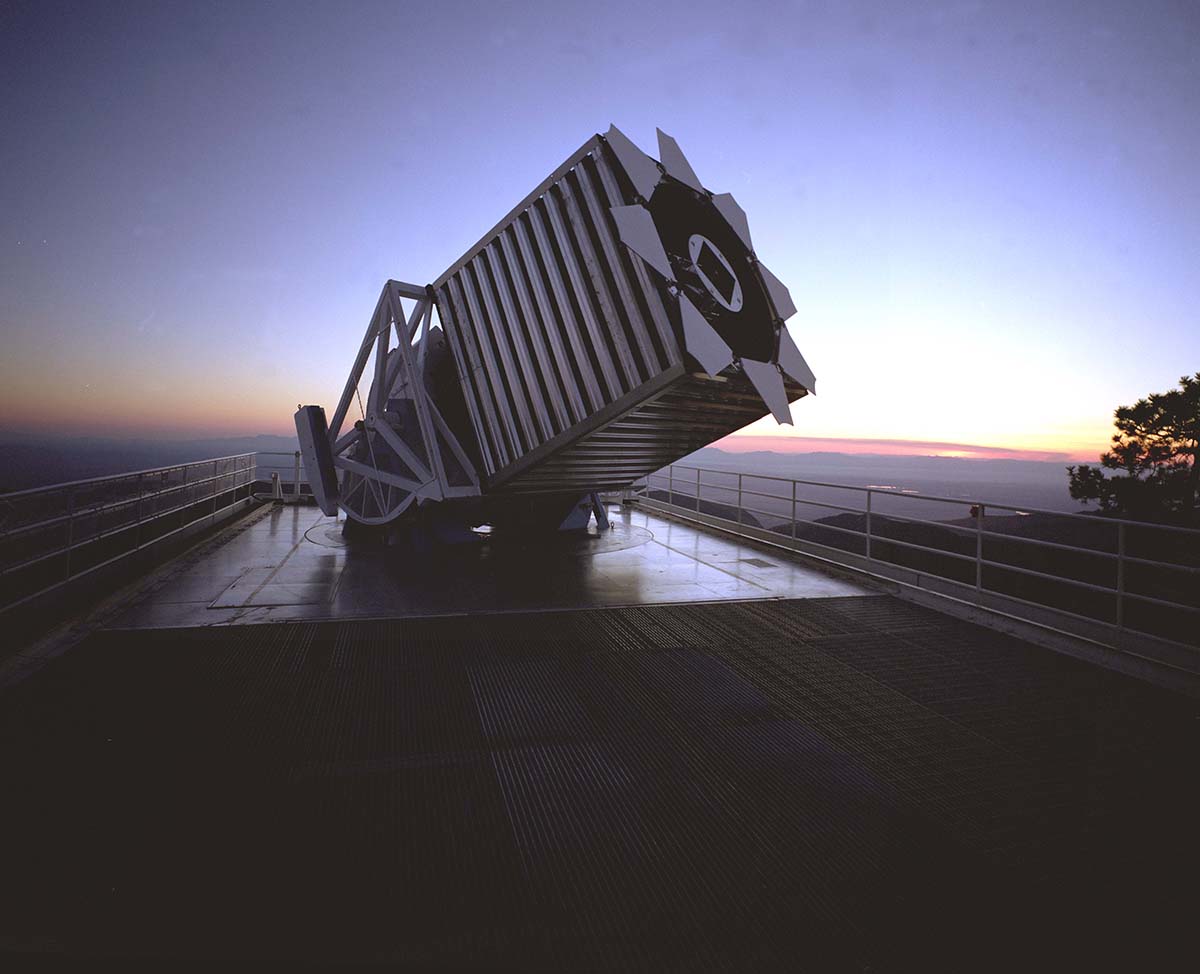A decade or two ago, technicians often spent the day snapping optical fibers into metal “plug plates” by hand so that scientists could use them to capture the light of faraway objects at night.
A plug plate is a flat disc speckled with holes that represent areas of interest in the sky. Once aimed in the right direction by a telescope, the fibers in a plug plate collect light from distant cosmological objects. That light flows through a spectrograph, which breaks it into components like a prism.
Today, most of the work of aiming the fibers for spectroscopic surveys is handled by specially designed robots. But not at the Sloan Digital Sky Survey. SDSS scientists still practice their craft by hand.
“We are the only ones doing this,” says Diana Holder, a fiber optic technician at the Apache Point Observatory in New Mexico, where the SDSS telescope is located. Holder has worked on SDSS since 2007—plugging and storing hundreds of plates over the years.
“Each fiber is like its own telescope,” she says. “It is very neat.”
Each modern SDSS plate is made of aluminum, measures 32 inches in diameter and 1/10 of an inch thick, and is patterned with about 1000 holes. The plates are inserted into the telescope by cartridge and cover an area of sky equal to 36 times the area of the full moon. The spectrograph gives scientists information that a camera can’t, such as the rate of the expansion of the universe, measured in redshift, or the temperature and chemical composition of a star or galaxy.
Robots can position optical fibers for a spectrograph more quickly than people. But people still have their advantages for a survey such as SDSS.
“For Sloan, it was very important that we could put the fibers close together, and many robot designs make that hard to do,” says SDSS astrophysicist Robert Lupton of Princeton University.
This coziness of the fibers mirrors the clustering of the relatively close-to-Earth galaxies SDSS studies.
On an optimal night, Apache Point operators can use about one plate per hour, which adds up to nine plates per night. SDSS is currently in its fourth iteration; it recorded more than 2 million redshifts during its third iteration alone, according to findings presented at the recent American Astronomical Society conference. SDSS has published more redshift data than every other telescope combined.
“Just to know that we are a part of all this is very nice,” Holder says. “It is a one-of-a-kind job, working with the plates and fibers here at Apache Point.”
SDSS is ongoing. There are no plans to switch to robots.
“The plates are really the representation of the SDSS collaborations,” says Site Operations Manager Mark Klaene, a more-than-20-year veteran of the Apache Point Observatory. “Journalists and artists come here and are intrigued by the manual process. This is the human interface with the Sloan survey.”









